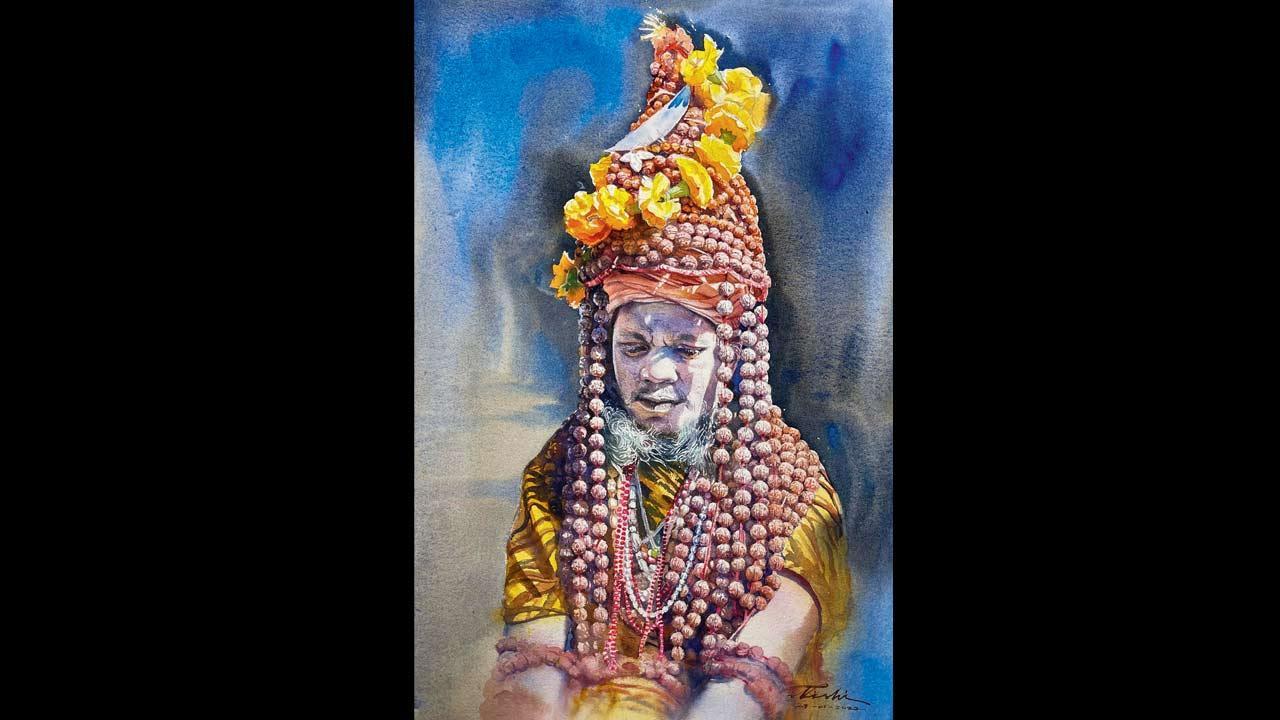After a Chennai-based artist took over the Internet with her realistic piece, artist Nishikant Palande tells us how to achieve realism in art

Sadhana by Nishikant Palande
In this case, art really does mimic life. With 58.1K likes and counting, the Internet has been showering love on a realistic painting of steaming hot filter coffee by a Chennai-based artist and photographer, who goes by @VforVendakka_ on Twitter. With shadows, a fitting background, and even skillfully composed steam, you might mistake it for a photograph. While this artist created the piece digitally using Procreate on an iPad Pro, we’re going old school with paint and brush to see if we can recreate life in art. A renowned Mumbai-based watercolour artist, Nishikant Palande, who added the Hina Bhatt Art Ventures Mesmerising Landscape Award 2021 and IWS India DOOARS Watercolor Summit Figurative Award 2021 to his list of accolades, breaks down the process to help art come alive.
ADVERTISEMENT

Filter coffee art by @VforVendakka_
I for Interest
Illustrate what catches your interest whether portrait, wildlife, landscape, or still life. You don’t have to paint what other artists are painting or in their style. Explore your abilities and build on them.
Sketch it right
Don’t be too quick to paint. The finished artwork does not only depend on colours, you need to get the sketch right. Understand the anatomy, structure, proportions and figures of your subject. Build observation skills, study references closely and practise sketching with pencil on paper. As you continue scribbling and practising, you will exercise your hands to move with ease and confidence.

Nishikant Palande
Light and shadows
Start by learning the colour wheel — primary and secondary colours. Move on to understanding shades, and which colours mix to form another. Then, when you observe the subject, ask yourself — Where is the light source and how does it fall? Where are the shadows hitting it?
Paintings are an illusion, brought to life with light and shadows. Watercolours make a transparent medium; you must layer colours to achieve a realistic and three-dimensional effect. So, for the first layer, specifically with watercolours, establish the values of highlights, shadows, middle tones and core shadows. With light, use warm tones like orange for highlights, and cool tones like blue for shadows. Create this separation first and then build on it with washes.
White adds value
With watercolours, don’t paint the whites, leave the parts uncoloured and let the white of the paper come through. This will help keep the painting fresh. Adding white or black will break the harmony of colours.
Log on to @nishikantpalande on Instagram
Take notes from the expert
Watch tutorials, read about and practise techniques in your chosen medium, focus on your work and believe in yourself.
 Subscribe today by clicking the link and stay updated with the latest news!" Click here!
Subscribe today by clicking the link and stay updated with the latest news!" Click here!







